#Past Present and Future 1985
Explore tagged Tumblr posts
Text
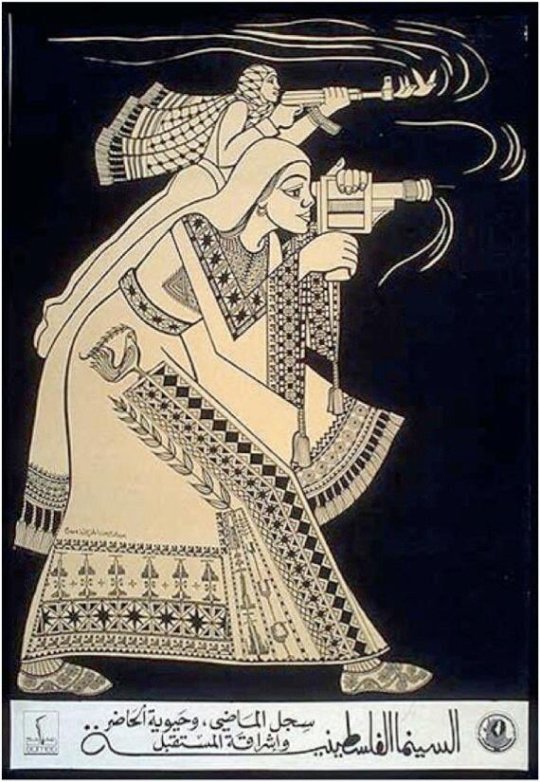
The Palestinian cinema
Recording the past
Animating the present
Illuminating the future
Abdel Rahman Al Muzain, circa 1985
2K notes
·
View notes
Text
⋆.˚ chapter ii: girls on film ᝰ.ᐟ
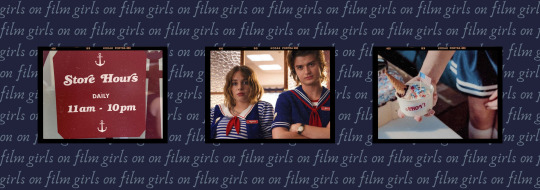
previously on: 🕰️ BACK TO THE FUTURE 🕰️
“Ma'am, are you sure you’re okay? or do i need to call a doctor?” His face is fully concerned of your well being right now. Instead of answering him, your eyes travelled from the television back to the man's direction.
“What year is it now?"
“it’s 1985? duh..?”
And that's the moment when you knew.
You are doomed.
⋆.˚. ݁₊ ⊹ . ݁˖ . ݁༉‧₊˚.⊹₊ˎˊ˗
warning: slight cussing
main masterlist | general masterlist
pairing: steve harrington x fem!reader
⋆.˚. ݁₊ ⊹ . ݁˖ . ݁༉‧₊˚.⊹₊ˎˊ˗ ⋆.˚. ݁₊ ⊹ . ݁˖ . ݁༉‧₊˚.⊹₊ˎˊ˗ ⋆.˚. ݁₊ ⊹ . ݁˖ . ݁༉‧₊
“You’re kidding, right?” A chuckle slipped out of your mouth, starting to feel nervous of your own uncertainty.
He shakes his head. "Nope. Do I look like I'm kidding?" He asks, wondering what was so funny. He looks at you, now beginning to get a bad feeling about you.
"Are you feeling alright?" He asks once more, in a more concerned tone this time. He leans across the counter a little, wanting to get a better look at you. You on the other hand, let your eyes wandered around the room once again, noticing a calendar that says 20th of July 1985.
“Shit, it is the 80s.”
"You seriously just figured out what year it was?" He asks. "Did you just wake up from a coma? Hit your head too hard on something?" He asks, now feeling a mix of confusion, annoyance, and concern.
"What? No! Did she put you up to this?" You asked, wondering if this is all Mrs. Byers doing, due to your birthday is gonna be in a week, and all you can think is maybe she's putting up a surprise or a prank... a week before your birthday maybe?
"Who put up to what again?" He started to get even more confused. You noticed the other lady from the counter was also looking at us and you can clearly see this man is also getting annoyed.
"Mrs. Byers! Don't you know here?" Hawkins is a pretty small town, so you assumed people must know more than who their neighbors are here.
"You mean Joyce? Joyce Byers?"
"Who the hell is Joyce Byers? No, it's Nancy Byers!"
The man squinted his eyes out of irritation. "There's no Nancy Byers here, lady. There's only either Nancy Wheeler or Joyce Byers, so pick one. Wait, are you even from around?"
You thought of the two names he mentioned, but you don't seem to recognize any of them. You just recognize the name "Nancy" and "Byers", but not "Wheeler" or "Joyce".
"No, actually not. I'm just an exchange student here in Hawkins High School, and I stayed at the big house on North Ave Street."
Once you mentioned your address, he slightly widened his eyes, you can read his emotions as shocked or confused.
"Ma'am... Nobody lives on that house..."
Well, no shit. You thought. Remembering that the house looks abandoned the second you woke up on that dirty bed, surrounded by flying all over your head. "Yeah, obviously. But, it wasn't! The house wasn't suppose to look like that! It looks nothing like that before."
"Well, but it looks like that now, ma'am. Are you sure you're not a runaway patient from any asylum?"
You gasped dramatically on the mention of 'asylum', placing a hand on top of your chest, offended by his words. "First of all, stop calling me ma'am, wil ya? Second of all, I'm not a fucking asylum patient! I'm completely fine, You're all just being crazy! Thinking that this is year 1985."
You continue bickering with the man, which it's starting to feel like you made the man's day much more worse then it was before. You noticed all along he seemed to hate his job, and now he has to face an annoying customer, not believing that this is year 1985. You finally gave up after some long bickering session with the man and you accepted the fact that this is reality. The reality is you just time travelled or went through some time portal, transferring you from your present in 2025, to the past in 1985, you went 40 years back way before you were born.
“Look, this sounds impossible, but I might’ve come from the future.” You confessed, hoping that he'd believe you.
There was an uncomfrtable silence between the two of you before he started laughing. The laugh sounds... mocking. Of course he wouldn't believe you. Just imagine, this is your average day of working, and suddenly there's a customer, coming up to you just to claim that they're from the future.
"Yeah, no. I'm not buying that. You're probably just drunk or high or something," he says, trying to come up with a reasonable answer.
"You're not seriously trying to believe you're from the future, right?" He asks, letting out a small disbelieving chuckle.
You let out a scoff, feeling so done with all of this. This... This just feels like you're in the movies, like you're some sort of main girl character on films, time travel films... Back to the Future! You haven't actually seen that movie, but you're pretty sure that what you gotta do.
You gotta go back to the future.
༊࿐ ͎. 。˚ ° ⊹ ˚.. ݁₊ ⊹ . ݁˖ . ݁༉‧₊˚.
"Hey, dingus! Is that one of your kids that you're babysitting?" A short, dirty blonde haired lady opened the window behind the counter, glancing at me before she turned her head to this man.
"No, idiot. This girl... She... She claims that she's from the future..."
"You've gotta be shitting me."
The man gave her an 'I know, right?' look, agreeing with her confused expression. I noticed there were other customers showing up, a group of girls with funky hairstyles and bright colored clothes. I quickly stepped away, realizing that I'll be holding up the line if I keep standing there.
"Please... Steve, was it? You really gotta believe me, man..."
He glanced at the customers next to you before turning back his attention to you.
“Go to the back, Robin’s there, just tell her I told you to get inside.” He simply said before fully turning his attention back to the customers.
note: hey guys! here’s a pretty short chapter hehe.. i figured i should post more and keeping it a cliffhanger to make you guys wait :p really hope you enjoy this first interaction between the reader and steve! stay tuned guys <3
taglist: @xprloki @pupwrites @gorlillaglue25 @lovestrucklyuniverse @keerysfolklore @www-interludeshadow-com @pleasantsoulcolor @mochminnie @steviespookie @damon-loves-pie @imjustdreamingig @starkleila
#steve harrington#steve harrington au#steve harrington fanfiction#steve harrington fluff#steve harrington x fem!reader#steve harrington x reader#steve harrington x y/n fluff#steve harrington x you#stranger things au#stranger things fanfiction#stranger things imagine#stranger things angst#stranger things fluff#stranger things fic#stranger things x you#steve harrington imagine#stranger things
141 notes
·
View notes
Text
a short patch timeline on reverse 1999
So I've been going back and forth for almost a year now on comprehending and helping people comprehend the timeline in Reverse: 1999 because oh my god, it's so, so convoluted that it's still taking a long time for me to even write down the information without overexplaining it. And that's just the main story.
However, I've been able to piece together the timeline events by patch and chapter to make things easier for everyone. (...unless you want me to even include the anecdotes, which is another can of worms I'd like to not open.)
However, since 2.0 forwards will be taking place after 1.9, I won't be including the patch names. But, I will put their placements in the timeline without making specific notes to avoid spoilers.
I'd like to first note that 1.6 (Notes on Shuori) has no definite placement on the timeline. The reason why is that 1.6 is personally considered a timeline anomaly; there are plot holes and information that made it difficult to deduce when it took place. (i.e. Yenisei's origins, Getian's character story, Bessmert's* presence) For now, I will leave this out.
Additionally, a lot of the character stories take place between the past and the future. Thus, the character story that chronologically takes place the earliest by far is Lucy's while the latest would be Ezra's.
—
First of all, we start with 1.8 (Farewell, Rayashki) in its entirety. From Windsong's past, to her arrival in Rayashki, to when the second "Storm" took place, and Vila and the kids needed to adjust to this new normal.
Next is Chapter 3 (Nouvelles et Textes pour Rien) and Chapter 5's interchapter. (The Star) Both the story of Vertin's becoming of the Timekeeper, and Greta Hofmann's experience with the Apeiron group are both aligned. Greta even mentions Vertin in her log after returning to the Foundation.
Afterwards we skip to 4 years later, and we're now in 1966. (Post First "Storm") Three events occur here. First, 1.1, (Theft of the Rimet Cup) then 1.3, (Journey to Mor Pankh) and then finally, the Prologue of our story. (This is Tomorrow)
Its then quite straightforward afterwards. We immediately follow up with the first 4 Chapters taking us through 1929 to late 1913. Then afterwards, we have Chapters 5-7 taking place within the first 3 weeks of January 1914, and then we're immediately taken to August 1990 at the end of Chapter 7.
I'd like to also add that within those 3 chapters, both rougelikes (Echoes in the Mountains and Series of Dusks) took place within the same time. Although, Series of Dusks ends before Chapter 7 due to Semmelweis and Lorelei leaving with the Foundation right before the "Storm" hit.
Now, in 1990, we start with 1.2 (Nightmare at Green Lake) followed by patches 2.0-2.2, all of which take place in immediate succession. And then for now, we end with 1.5. (Revival! Of the Uluru Games)
So if I put all of these in one list, it looks like this:
Notes on Shuori (1.6) - Undetermined placement
Farewell, Rayashki (1.8) - 1999+1 (1996) -> 1999+2 (1985)
Nouvelles et Textes pour Rien + The Star (Ch. 3 and Ch. 5 Interchapter) - 1999+4 (1987)
Theft of the Rimet Cup (1.1) - March 1966
Journey to Mor Pankh (1.3) - April-May 1966
This is Tomorrow (Prologue) - Jun. 3 1966 -> Feb. 14 1929
In Our Time (Ch. 1) - Feb. 14 1929
Tender is the Night (Ch. 2) - Feb. 15 1929 -> Aug. 1913
Nouvelles et Textes pour Rien (Ch. 3 - Present Time) - Aug. 25 1913
El Oro de Los Tigres (Ch. 4) - Aug. 26 -> Oct. 10 1913
Prisoner in The Cave (Ch. 5) - Dec. 24 - Jan. 4 1914
The Star (Ch. 5 - Interchapter) - Jan. 4 1914
Echoes in the Mountain (Rougelike 1) - Undetermined time, before Jan. 8 1914
E lucevan le Stelle (Ch. 6) - Jan. 6-12 1914
Series of Dusks (Rougelike 2) - Jan. 8-13 1914
Vereinsamt (Ch. 7) - Jan. 12-13 1914 -> Aug. 1990
Nightmare of Green Lake (1.2) - Sept. - Oct. 1990
Patches 2.0 - 2.2 - Sept. - Nov. 1990
Revival! Of the Uluru Games (1.5) - Jan 1991
The story can only get even more convoluted from here. As of the moment, I've been sort of working on a larger timeline to piece the entire story together, especially since we've yet to finish it before the story ends. New stories and information continuously flows in the meantime.
91 notes
·
View notes
Note
i just read your time travel theory and all i keep thinking about is how in back to the future 2 marty and doc travel to the future and biff finds the time machine and works it in his favor so when marty and doc travel back to present time everything is wrong and they have to travel all the way to the beginning. have you had any thoughts on such a twist? (by the way i love all your theories and you blow my mind with every single one)
Short answer: a big huge YES!!!!!!
I actually allude to this idea in this post!
I believe that we have already seen aspects of the show inspired by Back to the Future Part II.
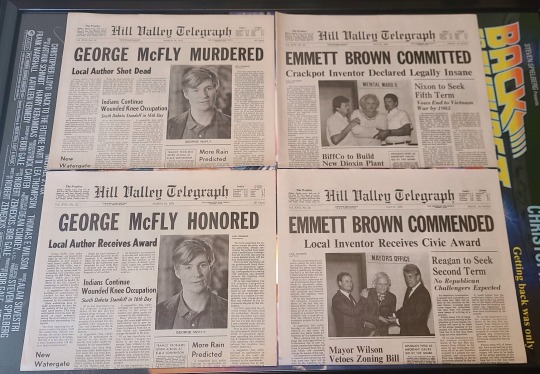
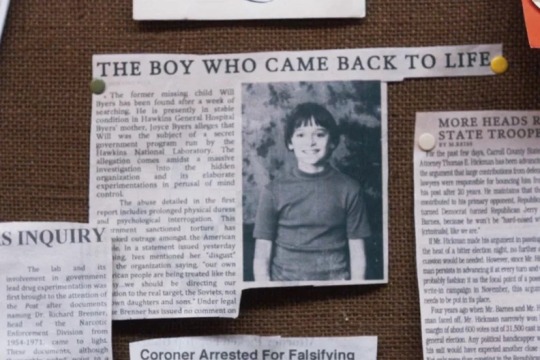
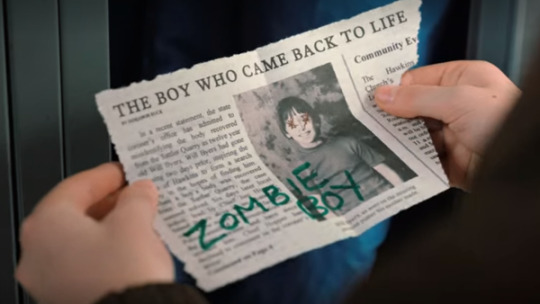
For example: newspapers indicating different timelines. Just one example is the differences between the Will articles… the Henry-Edward Creel articles are another major example of this. -> click here for info on that. Credit to @aemiron-main for these amazing finds.
Another one is the Dustin and Mike walkie-talkie scene- it’s a reference to the first sequel of BttF (since it was the only one of the movies where they used walkie-talkies!).
Now for some stuff I think we WILL see referenced from the movie…
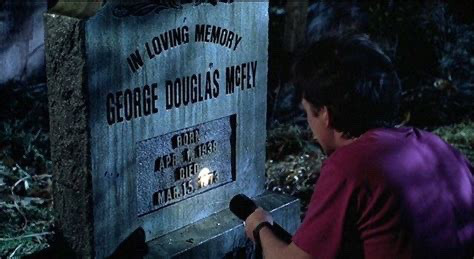
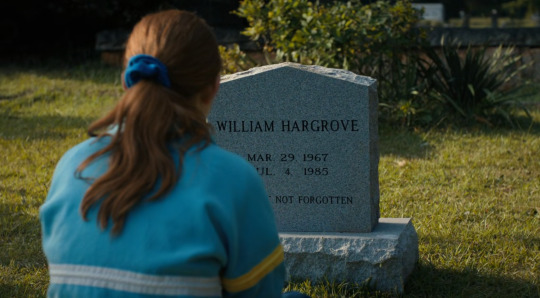
Now, I believe it’s very telling that they put “William” rather than “Billy” on the gravestone and that they played the song “Dear Willy” in the background of this scene. They are obviously alluding to the other William here as well, and possibly to a separate timeline where he died on November 6th, 1983. Not unlike how George Mcfly was murdered in the alternate 1985 in Back to the Future part II.
If true, then I’m even more inclined to believe that Lonnie is the #1 suspect. Lonnie being our Biff… and possible step father to Will…
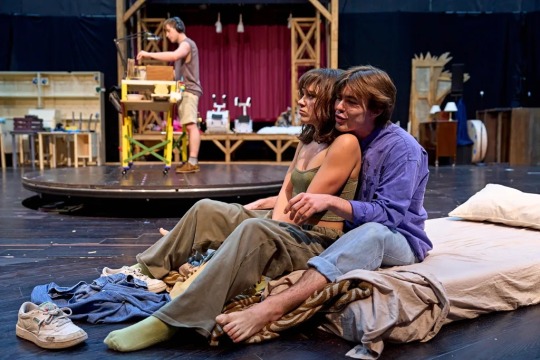
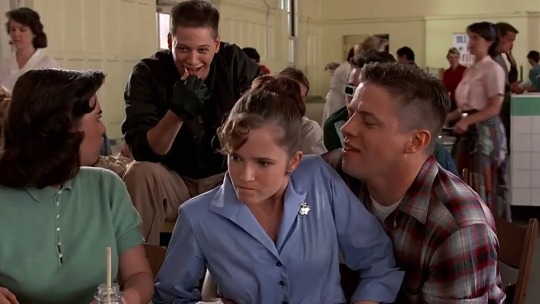
Look at their similarities… “[He] always did have a way with women.” 🤢
Then, of course, we must have a scene like this one.
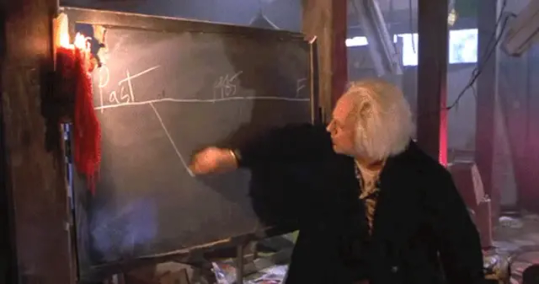
The alternate timeline!!! There’s absolutely at least one of these, possibly more. For this scene, I like to envision Dustin being the one to explain this to everyone.
Now for my favourite idea…
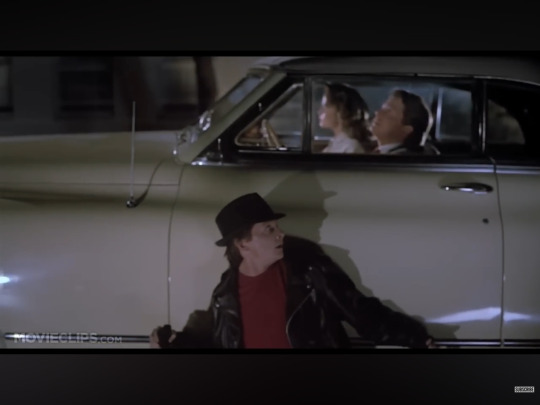
Our characters travelling back to a previous moment within the show! Ah… movie magic. I cannot tell you how much I love this concept. Blew my mind as a child. Look at how the events of the first Back to the Future movie were occurring as a second Marty was on a separate mission desperately avoiding detection from his past self. Time travel can be confusing as heck but damn it’s fun.
I will say that I do not think time travel within Stranger Things will occur in the same way as it does in Back to the Future. It’ll be different somehow. I mention a pretty *wild* idea here.
Now. Here are some things I’m nearly confident about:
Will will (or has) travelled to the past. SO much evidence of this, it’s nearly undeniable.
Mike *somehow* is their “ride” back in time. This is heavily implied when Dustin calls up Mike for a “ride” while the DeLorean is shown on the big screen.
Multiple timelines exist, and we will likely see them or at least learn about them.
Vecna, Mike, and Will are the characters most associated with time and time travel.
Ahhh I love time travel and Back to the Future. The Duffers clearly do too! Back to the Future has been referenced since episode one when we first saw Will in that classic red “life preserver”. The references go deeper than most people realize too. I gotta say too, the whole play being set in the 50s, with the parents as teens, is very reminiscent of Back to the Future as well!
I would not be surprised at all if they referenced this classic sequel a fair bit in the final season!
#Ask#thank you for the ask dear anon!!#can you tell I love BttF 2 especially haha#stranger things theory#stranger things#Will Byers#mike wheeler#byler#back to the future
70 notes
·
View notes
Text
青白之魅 4: Set Design
1 Introduction & Presentation // 2 Background & Influences // 3 Hair & Makeup // 4 Set Design // 5 Clothes & Accessories // 6 Conclusion
I read yalls tags obsessively when you reblog these and they're so cute, tysm they are very encouraging :>

Thank you Bloomin Studio for this shot of the set before getting started!
The set took a lot of inspiration from Green Snake (1993). We set this up in Cujo’s living room, which was already equipped with a wide black backdrop and some lighting. Bloomin Studio was kind enough to bring their Chinese style side table, foam rock, smoke machine, and additional lighting.
In the movie, when the two sisters take human form and join human society, they create a full-blown mansion in an empty, desolate area using magic. When trying to reveal to Xu Xian the true nature of his wife, Fahai the monk calls the house an illusion, but it served its purpose as their home, so is it really “fake?” Who decides whether something is “real” or not, and how? This is part of the reason I wanted to construct the set from scratch, in someone’s living room—the idea that we could make something beautiful and complex happen in an unlikely place.
(Unfortunately I do not have centuries of spiritual cultivation under my belt, so I had to buy things and set them up like a mortal.)

Behind the scenes, with Cujo handling Spirit, who's wound around Yulan's forearm :>
Bamboo

Green Snake (1993) screenshot, 10:25
The opening scenes of Green Snake (1993) take place in a bamboo forest. In an important foreshadowing, the monk Fahai chases a spider demon in human form through a bamboo forest. The spider demon has cultivated for two centuries—180 years longer than Fahai himself—in an effort to reincarnate, but Fahai takes his power away and traps him in a pot, because it goes against the natural order for a demon to take human form.
He goes on to attack the snake sisters, who are still in snake form, before he realizes that there is a pregnant woman giving birth in the forest, and the snakes are simply shielding her from the rain. This scene alone sets up the rest of the movie to question, what are the limits to what we consider human? What happens when we stop considering someone as human, and how far will someone go to be considered human? I find that these questions are very relevant to the world today, especially in the US right now.
In addition to being a vital building material throughout East Asia for the past, present, and future, bamboo holds significant cultural value as a plant that is thin and flexible, yet stronger than many brittle materials. It's one of the Four Gentlemen, representing the virtues an upstanding person should have—ideally, a well-read gentleman should be open-minded and flexible, yet enduring, just like bamboo.

梅蘭竹菊,趙少昂,1985,香港商報副刊 March 2022
Each plant of the Four Gentlemen represents a season. Bamboo represents the summer. Summer is the season during which the Dragon Boat Festival happens, a holiday also associated with snakes—the reveal of Bai Suzhen's snake form to Xu Xian happens during that festival, when they drink realgar wine (arsenic wine... controversial to say the least) to honor tradition, which is poisonous to snakes (possibly to people too??? who knows honestly).

In Green Snake (1993), Xiaoqing is the only one affected by the realgar wine because Bai Suzhen's cultivation is high enough that it's harmless to her.
We bought two pots of faux bamboo for our set. They’re a little questionable up close, but they look pretty realistic as part of the backdrop. Unfortunately real bamboo grows like nobody's business and comes with just... a whole host of problems that we weren't prepared to deal with during a one-day shoot, so we had to use artificial alternatives. Thankfully, Cujo (the super cool Snake Guy running Art of Scales) said he'd be able to use them, so they definitely didn't go to waste after the shoot :)
The bamboo came in not-so-pretty black plastic pots with a brick inside as a weight, so I brought a big semi-collapsible woven bamboo (bamboo squared! hahaha) basket, and stuck one of the plastic pots inside. It looked SO much better once you couldn't see the black plastic.
We also used Cujo’s bamboo screen as a structural layering piece. Dried bamboo was and still is one of the most common building materials you'd see in Asia, so the bamboo screen was perfect, not to mention it saved us the trouble of having to fly one down to SoCal since it was already there. It's made of a bunch of bamboo stalks tied together and can roll/unroll. Huge thanks to Cujo and also Kevin for fiddling with its shape to make it stand up on its own, that thing was heavy!
Water

Green Snake (1993) screenshot, 00:38
Snakes are traditionally associated with creation (Fuxi & Nuwa) and the element of water. Green Snake (1993) opens and ends with the visual of running water, with many important scenes taking place on a canal or by a lake. The original Legend of the White Snake is said to have taken place by the ��湖/xi1 hu2/West Lake in Hangzhou—the bridge on which Xu Xian and Bai Suzhen are said to have met is still there, and a popular attraction.
In the Peking Opera, Bai Suzhen refers to the lake several times as a symbol of the constance of nature: as conflict rises around her, she remarks on how similar the lake looks to that one day all those years ago when she first took human form and met Xu Xian.

斷橋殘雪, Armstrong, William Collection, Historical Photographs of China, 1908-1910
To create the look of reflective water, we used Mylar mirror paper. It's a favorite of indoor photoshoots, especially in the Hanfu world—probably like 80% of hanfu studio photoshoots use it. The paper is super reflective and comes in a roll so that it can be spread out over the floor of the set, making it look like we’re lying on the surface of a peaceful lake.
Fabric
Green Snake 1993 diverges from the original legend a bit. There's an earlier scene where Xu Xian accidentally sees Xiaoqing's snake tail while the sisters are bathing and runs off in terror. In an attempt to hide themselves, the sisters hang up green silk, and tell him (when he comes back) that what he simply mistook fabric from their laundry flying in the wind as a snake tail (somehow this works, as male characters in Chinese stories tend to be dumb as hell).

Green Snake (1993) screenshot, 48:25
We bought copious amounts of misty white tulle to hang off the bamboo screen and trail across the mirror paper ground. It looked a lot like fog or the foam at the bottom of a waterfall, and it also helped cover the backdrop stand on the right. They were not silk, because once again We Had A Budget, but one of the pieces of fabric was printed with calligraphy, which was a nice touch.
Scrolls
We used two scrolls in this set: one is our standard 九雲閣 calligraphy scroll (that’s Cloud9 Pavilion in Chinese, jiu3 yun2 ge2) just as a fun little branding thing, and the other is a silk-mounted print of the 紅葉題詩仕女圖/红叶题诗仕女图/hong2 ye4 ti2 shi1 shi4 nv3 tu2/'Lady Inscribing Poetry on Red Leaves' by 唐伯虎 (Tang Bohu).

红叶题诗仕女图, 书法欣赏,February 2017
Writing poems on red leaves has a fair amount of symbolism behind it. 紅葉題詩—the image of a woman writing a poem on a red leaf—is a common trope in literature and Chinese paintings, and lots of poems and art pieces depict the same thing. There are a variety of stories associated with the action, mostly having to do with Tang Dynasty palace ladies under the rule of 唐玄宗 (Emperor Xuanzong), who only had eyes for 楊貴妃/杨贵妃 (Yang Guifei). One sadder version tells the story of the other neglected palace ladies writing poems expressing their yearning for freedom on red leaves and dropping them into the river, hoping that the current will carry them out of the Shangyang palace that they were not allowed to leave. Another category is a little cuter, describing chance meetings between lovers—people finding throwaway poems on red leaves and then later getting together, that sort of thing.

明 陈洪绶《题诗红叶图》, Sohu 2020 (another painting of the same trope)
I didn't really look into the story behind the painting until after the shoot, but I can see sort of a connection between the intent of this shoot and some elements of the stories described. Stories about the neglected palace ladies—who are said to have entered the palace at 16 and left at 60 (上陽白髮人, 白居易 Bai Juyi), never having seen the emperor's face once—are usually grievances against the emperor's favoritism of Yang Guifei, which is by extension a criticism of the emperor's rule (the decline of the Tang Dynasty's golden age happened under this guy so he gets a lot of shit for causing it).
I draw this back to the question of what it means to be seen as human—were the thousands of frankly unnecessary palace ladies seen as human in Xuanzong's eyes? What happens when someone is so 'high up,' whether politically or spiritually or whatever, that they cease to view other people as equally human? Should a system be upheld when it no longer serves its function in a changing environment?

Zhang Guo Having an Audience with Emperor Tang Xuangzong (張果见明皇), Wikimedia Commons, Yale University Press 2002
When I picked the painting, though, I didn't really consider all this; I mostly wanted to have a painting of a woman (common subject matter trope for painters, called 仕女圖/仕女图/shi4 nv3 tu2/'palace maid image', somewhere in the background. The Legend of the White Snake deals in the contrast of form versus essence, Green Snake (1993) even more so. The snake sisters take the form of women; does that make them women?
Fahai certainly didn't think so, until the end of the film, when he sees that Bai Suzhen has given birth to a healthy baby boy. There's a moment of cognitive dissonance—Fahai realizes that maybe Bai Suzhen really did become human by virtue of living and experiencing humanness. (To what extent does experience dictate identity, versus origin?) If she really became human, then Fahai has spent the better part of the entire movie killing a human, which is entirely opposite from when he thought he was acting righteously to uphold the natural order. He can't say that his actions were justified because he had good intentions—if good intentions trumped effect, then Bai Suzhen must be virtuous because her intentions were also innocent. This was a fascinating realization at the end of the movie.

Yulan as Bai Suzhen with lots of smoke in the background
I especially like this photo of Yulan as the White Snake (because I can get all Art Analysis with it). She's lying on the ground, reaching up towards the painting, like the woman illustrated on the scroll is the goal she is trying to reach. There's smoky haze in the background, and her hand is pinched in a lotus position, as if she is trying to catch the mist in her fingertips. Most notably, the position of her body hides the snake embroidery on her sleeve, but you can still see the tiniest hint of it through the sheer fabric.
Does the fact that she sees the form of a woman as her goal make her less of a woman, or does it actually validate her identity as one? (didn't mean it as a trans allegory when I started it but I guess it is now lol)
Umbrella
We got a grand total of like three shots with our oil paper umbrella, partially because we've had that thing for years and its opening mechanism is lowkey broken so it was really hard to get good poses with it. I'm glad we got at least one good picture with it though—it's a real oil paper umbrella that's waterproof and hand-threaded (even though the braking mechanism sheared off a while ago so it won't stay open unless you hold it there).

If my hand was not holding the umbrella up it would collapse :/
Xu Xian and Bai Suzhen meet in a scene known as 借傘/借伞/jie4 san3/'Borrowing the Umbrella," where Xu Xian lends Bai Suzhen his umbrella when it starts raining while they're on a boat. Bai Suzhen rejects it, saying she can't possibly take the umbrella from him (since he'd get wet), and sends Xiaoqing to give the umbrella back to him. They go back and forth like this until Xiaoqing takes both their hands and has them share the umbrella. When the sisters have to leave, Xu Xian lets them take the umbrella with them so they don't get rained on on the way back home—a clever flirtation setting up another chance to meet, since he has to go retrieve the umbrella from their home.
Other Stuff I Got That Doesn't Have Specific Symbolism:
Fake moss—looked very realistic! Clung to absolutely everything though, I still find it on my socks sometimes.
Various vases—went for dark-colored or greenish vases, some off Amazon and some from China. You'll notice that they're all empty, because they kept tipping over when I put fake flowers in them ;-;
Candles—these were Cujo's, shoutout to him running out the morning of to get new batteries for them! Super atmospheric :D
Fake rock & smoke machine—very popular for hanfu photoshoots, but not practical to get for one-time use, so we asked Bloomin Studio if they could bring theirs. They have lots of experience in producing and set design!
Fake flowers—I got SO MANY fake flowers and ended up using like. 3 branches of them ;-; Thankfully was able to gift most of those to Art of Scales & Bloomin Studio so I didn't have to cart them back up to NorCal.
Yeah ngl I used maybe like 60% of the stuff I bought for this shoot. In my defense I was buying props for like a good 3-4 months before it actually happened and retail therapy is Important to me.

Here is another behind the scenes shot :)
-
Okay this one was a bit shorter, partially because there were a lot of elements that I wanted to include that I unfortunately didn't end up having enough time to set up. I'll recap those on post 6. I am tired but I hope this was interesting :)
1 Introduction & Presentation // 2 Background & Influences // 3 Hair & Makeup // 4 Set Design // 5 Clothes & Accessories // 6 Conclusion
#hanfu#chinese fashion#chinese hanfu#hanyuansu#hanfu fashion#hanfu photoshoot#chinese history#hanfu art#chinese#long post#behind the scenes#set design#legend of the white snake#cloud9 hanfu#cloud9hanfu#九雲閣#青白之魅#snek#snakes#snake#photography#photoshoot#hanfu photography#chinese art#green snake#tsui hark#tang bohu
25 notes
·
View notes
Text
Master post
My own Posts.
Super Ghostly Farming DCxDP Superwoman AU
Super Phantom DCxDP
Future Son?! DCxDP
Super X-man
DND Young Justice
DPxDC A Tale of Two Jacks
Age Reversal
Teenage Mutant Ninja Wizard
Alien PETA
Young Justice Spider
The Year of the Dragon
Baby bat, Phantom, and the X-men
Superwoman Kara
Spleen Surprise DCxDP
Benders in DC (ATLA x justice league)
Random OC Villain Character not connected to any existing media
Revival Brothers DPxDC part 1 part 2 part 3
X Phantom
Omega Spider
My MLP Redesign part 1 part 2
Do-Over Gone Batty
Not mine but I am invested in.
Time Winder. Connected to Time Travel Teen Parents also inspired Time Travel AU
Re-alive ray superson
Pack less misunderstandings
Thermon aka Ghost Pokémon
Red Arrow’s Ghost
Halfa universal clone donor
Snookums the kryptonian guard dog!
Home alone with Deathstroke looney tunes style.
Niche unheard of crossover ideas. (Some not even a one shot on ao3🥲
Wild Kratts x How to Train Your Dragon
Batclan in Redwall
Series and media I like or liked and enjoy fan discussion and fics on (may include Cartoons, Books, Movies or Games.)1 How to train your dragon2 Transformers Prime (cartoons, NOT the movies)3 Avatar the last air-bender. (Not including Korra)4 Teenage mutant ninja turtles (cartoon series)5 Spectacular Spider-man (cartoon Series)6 Redwall (cartoon and book series)7 Pokemon (cartoon and game)8 Sonic the hedgehog (cartoons, and comics.)9 Justice league (the 1990 animated series. NOT the live action movies) And batman animated. 10 My Little pony FIM (G4 cartoon) 11 Marvel Cinematic Universe (before Disney bought it)12 Wings of Fire (books)13 Ben 10 (cartoon)14 Star wars (past liked not present)15 Star trek original series (past liked not present)16 Neo-pets ( Toys. great concept but not the best executed game)17 Kungfu Panda (cartoons)18 Teen titans (original Cartoon, not go)19 Rangers apprentice (books)20 Kim possible (cartoon)21 Lilo and stitch (cartoon)22 American Dragon (Cartoon)23 Big Hero 6 (cartoon) 24 Guardians of Ga’Hoole (books. don’t bother with the movie)25 Epic (animated movie by Blue Sky studios)26 Atlantis the lost Empire (Disney cartoon)27 Big bang theory (TV)28 Lord of the Rings (movies and books.)29 Dragon Quest (games)30 Wild Krats (cartoon)31 The Fluppy Dogs (cartoon)32 Zootopia (cartoon)33 Nelvana Care bears (cartoon specifically the 1985 to 1988 series)34 Last man standing (what can I say he reminds me of my dad)35 Bones (TV)36 Warrior cats. (books only read up until power of three arc)37 Flash (TV)38 Home improvement (TV)39 Steven Universe (cartoon. concept was good but poorly executed story)40 Phineas and Ferb (cartoons)41 Milo Murphy’s law (cartoon)42 Amphibia (cartoon)43 Emperors new groove. (cartoon)44 Harry Potter (books)45 Chronicles of Narnia (books)46 Dinotopia (TV movie, and books)47 Encanto (cartoon)48 Jane and the dragon. (cartoon)49 Gravity falls (cartoon)50 Swat Kats (cartoon)51 Chip and Dale rescue rangers (cartoon) 52 Ducktales (cartoon) 53 Prince of Egypt. (Animated movie) 54 Danny Phantom. (Cartoon) 55 Puss in Boots (dreamworks movies)56 Young Justice (cartoon have not read the comics) 57 Batman Wayne family adventures (web comic. 58 Tower dungeon farmer (web comic)
46 notes
·
View notes
Text
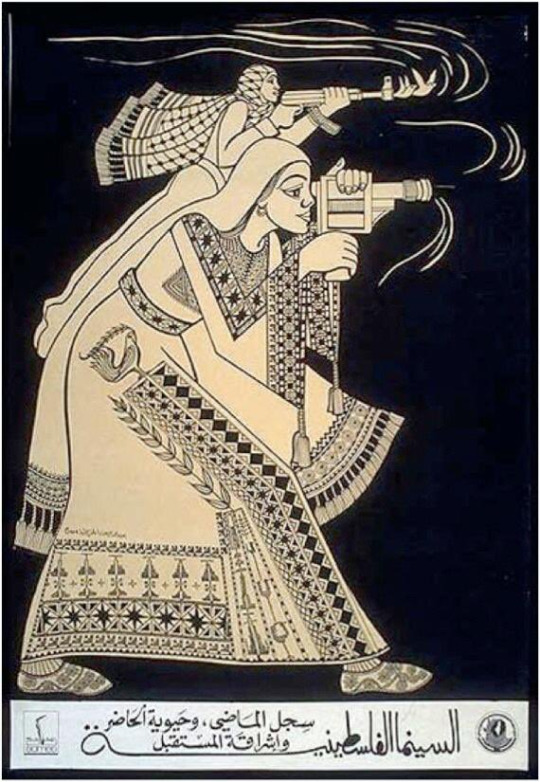
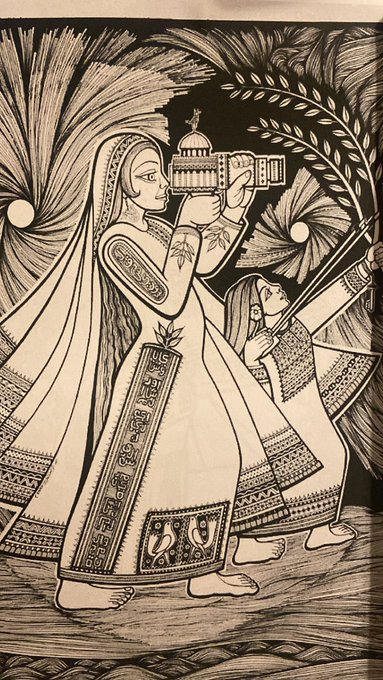
abdel rahman al muzain (1985) via the palestinian poster project
the first image reads: the palestinian cinema, recording the past, animating the present, illuminating the future
49 notes
·
View notes
Text
Some disc jockey had the audacity to play Taylor Swift on the oldies station and I wanted to swerve my car into oncoming traffic. Do words not mean anything anymore? I guess every single sond is "technically" an oldy because they were all recorded in the past; there aren't too many songs from the future, and every time a song is released in the present it's suddenly from the past! What has society come to when they follow up King of Wishful Thinking (1990) with Shake It Off (2014) and pretend they're both oldies?
Context: Johnny B. Goode was released in 1958 and was considered an oldy 27 years later in 1985, so I'm more than comfortable calling a 33 year old song an oldy, sure, but a 9 year old song? NINE?!? Nine years is considered old now?
Put in the tags whether you make a distinction between "oldy" and "classic." I could be swayed towards calling Shake It Off a classic, MAYBE, if the argument was convincing and it came from someone whose opinion I respect, but I refuse to call it an oldy until at least 2030, and even that's pushing it.
#poll#polls#music#popular music#oldies#oldies station#radio#radio station#taylor swift#oldy#2014#1990#1985#1958#time#classic music#classics#shake it off#king of wishful thinking#go west#golden oldies
26 notes
·
View notes
Text
💫 comics masterpost 💫
(last updated july. 3, 2025)
current comics pull list (in release order)
batman
batgirl
batman and robin
batman/superman: world’s finest
batman and robin: year one
nightwing
titans
batman: the long halloween - the last halloween
justice league unlimited
saga
comics tbr
this is not an exhaustive list, and it’s not in any priority order. i may organize this better in the future, but as of rn it’s copy/pasted straight from my notes app lol. some of it is more specific, some of it is more general, just acknowledging to myself that i want to check X out! feel free to rec a run/arc if you don’t see it here or under my read list 💗
jla/titans
shadow of the bat
legend of the dark knight
batman- one bad day (all)
batman: streets of gotham
batman (from jason’s arrival onward)
superboy
impulse
batgirl (2009)
batman: white knight
batman: the knight (zdarsky)
detective comics (from jason’s arrival onward)
robin miniseries
batman and the signal
titans 2008
batman: gotham county line
green arrow
batman/superman
kyle rayner green lantern
birds of prey
catwoman
batman: gates of gotham
comics read
titles i’ve read start to finish first, then events. not *everything* i’ve read bc i’ve only tracked the bigger chunks (not every single issue), but most of it! also not in release order within era, whoops. (no pre-crisis listed bc i’ve only read some batman/tec here and there)
post-crisis (1985-2011)
nightwing 1996
nightwing 1998
wf3: world’s finest three (superboy/robin)
nightwing and huntress
batman and robin 2009
the new teen titans/the new titans
robin 1993
young justice 1998
red robin
teen titans 2003
batgirl 2000
batman: gotham knights
all jason og robin, post-crisis
a death in the family
a lonely place of dying
batman: cataclysm
batman: no man’s land
joker’s last laugh
bruce wayne: murderer?
bruce wayne: fugitive
infinite crisis
batman: under the hood
batman: hush
jla: tower of babel
titans (1999)
the outsiders (2003)
n52 (2011-2016, start of post-flashpoint)
nightwing 2011
grayson
red hood and the outlaws 2011
batman and robin 2011
robin: son of batman
batman eternal
batman and robin: eternal
robin war
death of the family
rebirth to present (2016-Now)
nightwing 2016
red hood and the outlaws 2016
task force z
joker: the man who stopped laughing
tim drake: robin
batman and robin 2023
batman/superman: world’s finest 2022
world’s finest: teen titans
red hood: the hill
robins: being robin 2022
young justice 2019
batgirl 2024
batman: the three jokers
batman 2016 (from #125)
from the dc vault: robin lives!
the boy wonder
justice league unlimited
batman and robin: year one
batman: the last halloween
titans 2023
batman: gotham war
titans: beast world
knight terrors (+ titans, nightwing, and robin tie-ins)
joker war
batman: urban legends 1-6, 10, 17
batman: city of bane
6 notes
·
View notes
Text
HUgE November 2012
PORTRAITS OF SHOEMAKERS
THE PHILOSOPHY BEHIND THE SHOES
Paul Harnden Shoemakers

“Even if you repeat a simple method,
If you continue doing that, a new world of creativity will emerge."
He moved to the UK in 1985 and enrolled in a prestigious college in London that has produced many shoe designers, but dropped out due to lack of interest in automated shoemaking. He then joined a long-established shoe manufacturer as a wooden shoemaker, but left after a year and a half. In order to make only what he wanted to make, he established his own brand in 1987. Even now, he only makes his products by hand, using minimal tools such as a hammer and chisel. ¥144,900 (MORERIDE)

Who makes the shoes?
There were craftsmen whose rebellious spirit was present in every form and detail. There were creators who depicted the past and the future at the same time, and designers who simply continued to beautifully decorate all feet. Of course, these were not sculptures or art pieces. What they made were simply shoes. But there was unwavering conviction in them. They were imbued with elegance, masculinity, and sometimes even fetishism. That is why they were called, with respect, shoemakers. People who simply continued to make shoes. There is no better portrait of them than their own shoes.
4 notes
·
View notes
Text
ITALO CALVINO ON PALESTINE
To Issa I. Naouri—Amman
Turin 10 October 1968
Dear Mr Naouri,
I have read the poetry of the Palestinian resistance that you have kindly sent me. They seem to be poets of powerful expressive force, full of sincere poetic and human warmth. The best thing would be to find a journal to publish these poems, I will try to contact a friend to bring them to journal's attention. Of course, in us Europeans the trauma of the persecution of the Palestinians has a special resonance because their current persecutors suffered—in themselves and in their families—persecutions that were the most horrific and inhuman in centuries, both under Nazism and also a long time before that. That the victims of the past should turn into the oppressors of today is the most distressing fact, the one which I think it is necessary to emphasize. I am sorry that none of these poets deals with this motif.
Personally I think that the only solution to the Palestinian problem lies down the revolutionary road both in the Arab world and amongst the Israeli masses. A revolution by the Israeli poor (to a large extent of Middle Eastern and North African origin) against their colonialist and expansionist rulers; but also a revolution by the popular masses in Arab countries against their reactionary and militarist oligarchies (even although these call themselves more or less socialist) who exploit the Palestinian problem for nationalist demagoguery. The real Resistance is not only a struggle against a foreign invader: it has to be a battle for a profound renewal within the society of one's own country.
I wanted to clarify my thoughts in order to confirm my solidarity with the oppressed Palestinians and their Resistance fighters in the context of a general political and human vision.
Thank you so much and best wishes.
From��Letters, 1941—1985 by Italo Calvino, translated by Martin McLaughlin with an introduction by Michael Wood (Princeton University Press, 2013) p. 358-359. Past and Future Presents
18 notes
·
View notes
Text
currently working on a Steve Harrington x future!reader au, where the reader basically comes from our present (2025), and our King Steve came from the past (1985).
really hope it’s gonna blow up cz i’ve really been thinking abt this au lately!
(i was inspired by my c.ai convo w one of the steve bots so don’t mind me)
heeereee it is!!
#steve harrington fanfiction#steve harrington x you#steve harrington fluff#steve harrington#steve harrington x y/n fluff#steve harrington x reader#steve harrington angst#steve harrington x fem#steve harrington x fem!reader#stranger things#stranger things fic#stranger things fanfiction#stranger things au#stranger things fluff#steve harrington au
16 notes
·
View notes
Text
Trope chats: Time travel

Time travel, a concept that has captivated human imagination for centuries, has been a recurring theme in literature and media, offering endless possibilities for exploration, reflection, and speculation. This essay delves into the rise and fall in popularity of time travel narratives, examines its use as a literary tool and symbol, and discusses the pitfalls inherent in its portrayal.
The origins of time travel in literature can be traced back to ancient myths and legends, where characters journeyed to distant pasts or futures through supernatural means. However, it wasn't until the late 19th and early 20th centuries that time travel became a prominent theme in fiction.
One of the earliest examples is H.G. Wells' seminal novel "The Time Machine" (1895), which popularized the notion of a machine capable of traversing through time. Wells' work laid the foundation for future time travel narratives, inspiring countless authors and filmmakers to explore the concept further.
Throughout the 20th century, time travel narratives flourished in various forms of literature and media, from classic science fiction novels like Ray Bradbury's "A Sound of Thunder" (1952) to iconic television shows like "Doctor Who" (1963-present). These narratives often served as vehicles for exploring philosophical questions about causality, free will, and the nature of reality.
Despite its enduring popularity, time travel experienced a decline in the latter half of the 20th century, as audiences and creators gravitated towards other speculative concepts. However, the genre experienced a resurgence in the late 20th and early 21st centuries, fueled by advancements in science and technology, as well as shifting cultural and social dynamics.
Films like "Back to the Future" (1985) and "The Terminator" (1984) revitalized interest in time travel, blending action, humor, and intricate plotlines to appeal to wider audiences. Similarly, television series such as "Lost" (2004-2010) and "Doctor Who" (2005-present) introduced new generations to the complexities and possibilities of time travel storytelling.
Time travel serves as a versatile literary tool, allowing authors and creators to explore a myriad of themes and concepts. It enables narratives to transcend temporal boundaries, weaving together disparate timelines and realities to craft compelling stories.
One of the most common uses of time travel is as a metaphor for exploring personal or societal change. Characters journeying through time often confront their past mistakes, grapple with unresolved conflicts, or seek redemption for past actions. In novels like Audrey Niffenegger's "The Time Traveler's Wife" (2003), time travel is used to explore themes of love, loss, and the passage of time.
Furthermore, time travel can function as a symbol for the human desire to escape the constraints of mortality and the inexorable march of time. In Jorge Luis Borges' short story "The Garden of Forking Paths" (1941), the protagonist embarks on a labyrinthine journey through time and space, reflecting the complexity and ambiguity of human existence.
Despite its narrative potential, time travel storytelling is fraught with pitfalls and challenges. Maintaining internal consistency and avoiding paradoxes can be difficult, as altering past events can have unforeseen consequences on the narrative's coherence.
Additionally, time travel narratives run the risk of becoming overly convoluted or relying too heavily on contrived plot devices. The temptation to use time travel as a convenient solution to narrative problems can undermine the emotional resonance and thematic depth of the story.
Moreover, time travel can sometimes be used as a crutch to evade meaningful character development or thematic exploration. Instead of grappling with the consequences of their actions, characters may simply "reset" the timeline or escape to a different reality, diminishing the impact of their choices and experiences.
Time travel remains a perennially popular and endlessly fascinating concept in literature and media, offering writers and creators a vast playground for exploration and experimentation. From its humble origins in ancient myth to its modern incarnations in blockbuster films and bestselling novels, time travel continues to captivate audiences with its promise of adventure, mystery, and philosophical inquiry. However, navigating the complexities and pitfalls of time travel storytelling requires careful craftsmanship and a deep understanding of its narrative and thematic implications. As long as human curiosity persists, time travel will remain a timeless trope in the literary and cultural landscape.
#writeblr#writers of tumblr#bookish#writing#booklr#fantasy books#creative writing#ya fantasy books#book blog#ya books#writers block#am writing#fantasy writer#female writers#fiction writing#how to write#story writing#teen writer#tumblr writers#tumblr writing community#writblr#writer problems#writer stuff#writerblr#writers#writers corner#writers community#writers life#writers on tumblr#writerscommunity
9 notes
·
View notes
Text
Past, Present, and Future Reads
Current, unfinished reads:
Dracula (1897) Rivals (1988) A Game of Thrones (1996) Crime and Punishment (1866)
Previously read books that I really enjoyed:
❅ To Kill a Mockingbird (1960) ❅ Go Set a Watchman (2015) ❅ Push (1996) ❅ Forever (1975) ❅ The Perks of Being a Wallflower (1999) ❅ Stalking Jack the Ripper series (2016-2019) ❅ The Mrs. Piggle Wiggle Treasury (1985) ❅ Claire of the Sea Light (2013) ❅ The Sorrows of Young Werther (1774) ❅ A Tale of Two Cities (1859) ❅ Nothing But the Truth (1991) ❅ A Man Called Ove (2012) ❅ Fahrenheit 451 (1953) ❅ Animal Farm (1945) ❅ The Odyssey (1997) ❅ A Midsummer Night's Dream (2003) ❅The Great Gatsby (1925)
Books that I plan to read in the future:
❅ Frankenstein (1818) ❅ Narrative of the Life of Frederick Douglass: An American Slave (1845) ❅ The Canterbury Tales (1387-1400) ❅ The Crucible (1953) ❅ Scarlet Letter (1850) ❅ Anna Karenina (1878) ❅ White Nights (1848) ❅ Hamlet (1623)
#literature#reading list#current reads#the great gatsby#dracula#rivals#game of thrones#crime and punishment#to kill a mockingbird#go set a watchman#push#forever#the perks of being a wallflower#stalking jack the ripper#sorrows of young werther#tale of two cities#animal farm#the odyssey#a midsummer night's dream#Mrs Piggle Wiggle Treasury is lowkey jokes but those stories were actually fun like i remember reading them on school nights with only the#light from my closet so I think its valid for nostalgia!
5 notes
·
View notes
Text
youtube
Pavane - Metropole Orkest dir. Rogier van Otterloo - Bill Evans Trio-1978
Composer: Gabriël Fauré; Arrangement: Claus Ogerman Soloists: The Bill Evans Trio: Bill Evans (p), Marc Johnson (b), Philly Joe Jones (drs) Metropole Orkest: 75 Years in Perspective - Its Past, its Present, its Future 4th Decade (1976 - 1985) Permission to us this material granted by AVROTROS
Credits & Acknowledgements Music selection: Friederike Darius, Annie Tangberg, Dick Bakker, Jan Bastiani, Max Boeree, Henk Heijink, Paul Schooneman, Fred Dekker Design & Production: Jolien Plat, Marvin Schruba Audio supervision: Dirk Overeem Text and Narrative: Fred Dekker Concept: Fred Dekker
-Metropole Orkest channel on YouTube- Thanks xoxo
5 notes
·
View notes
Text

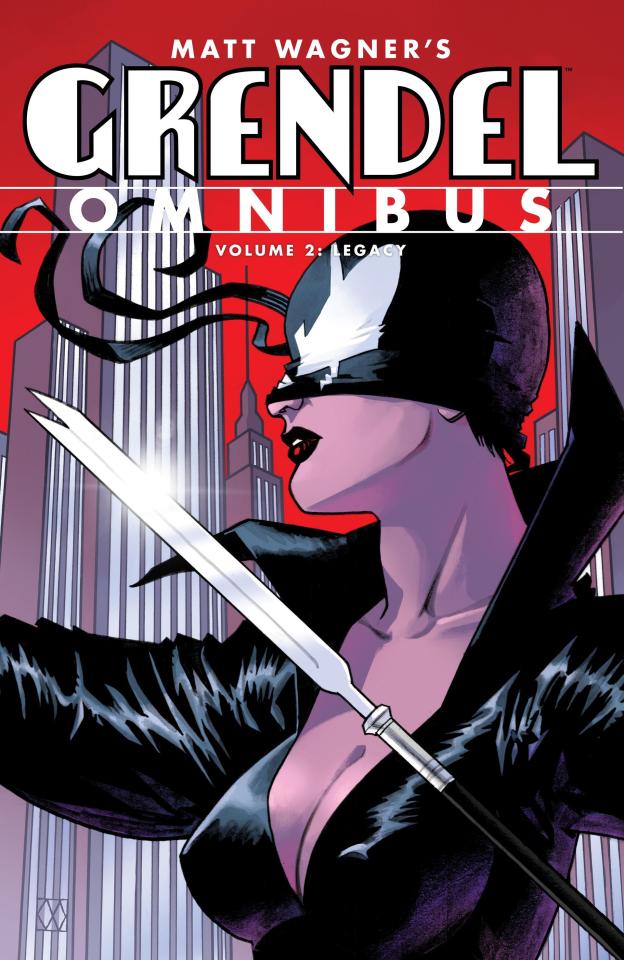


Originally published by Comico and later by Dark Horse, Matt Wagner's Grendel is a creator-owned series that's evolved over the years from costumed adventure to political drama to postapocalyptic action. Most of the stories are now collected in a series of massive Omnibus volumes, which have been reissued in the past couple of years with new covers.
Vol. 1 includes most of the original Hunter Rose saga, about the original Grendel character, a dapper but ruthless and sadistic costumed criminal mastermind battling a werewolf-like antihero called Argent. The Omnibus includes the "Devil by the Deed" storyline originally serialized in Wagner's MAGE series in 1985 (recolored in grayscale and red rather than full color), plus several other sets of stories about Hunter Rose. It's not quite comprehensive: It omits the early, abortive Comico issues Wagner retooled as "Devil by the Deed" (which were reprinted in the 2007 GRENDEL ARCHIVES, and which Wagner considers apocryphal), and crossovers between Hunter Rose and Batman (from 1994) and The Shadow (from 2014). Probably the most peculiar omission is that it excludes the 1989 SILVERBACK miniseries by William Messner-Loebs and John Peck, which presents the origin of Argent; I don't know if Wagner has disowned that series or if the assets needed to reprint it are no longer available.
Vol. 2 covers the first 20 issues of the Comico GRENDEL series, and take place about 40 years after Hunter Rose's death, in a near-future world where Hunter's biographer Christine Spar, daughter of Hunter's adoptive daughter Stacy Palumbo, becomes Grendel. The volume actually begins with a later series called "Devil Child," by Wagner's long-time editor (and sister-in-law) Diana Schutz and Tim Sale (originally published as a miniseries in the late 1990s), which deals with Stacy's fate; it is creatively accomplished but extremely bleak (and needs CWs for sexual assault and spousal abuse). The ongoing series, drawn first by the Pander Bros. in a somewhat dated but generally appealing anime-inspired style, later by Bernie Mireault, is a tragic saga of rage and revenge, somewhat more fantastical than the Hunter Rose stories. The Christine Spar story is probably the most compelling and emotionally engaging section of the whole Grendel saga, although the followup, tracing the subsequent fate of her boyfriend Brian, is again very bleak.
Vol. 3 covers the remainder of the Comico series, which ended with issue #40 due to Comico's bankruptcy. This moves the timeline forward hundreds of years, first with a set of experimental (if somewhat annoying) transitional issues, and then with an engrossing but rather frosty saga of political machinations and civil war, as an ambitious businessman called Orion Assante leads an insurrection against the power of a future Catholic Church and a plague of vampirism, with the dubious aid of a mentally unstable man named Eppie Thatcher, who assumes the Grendel role and may or may not be demonically possessed. The transitional issues at the beginning are rough going stylistically, but the main story is interesting and elaborately plotted science fiction, marred chiefly by the deliberate emotional distancing of the main character (CWs apply for incest, along with a lot of sometimes icky violence), whose death decades later brings the arc to a close.
Vol. 4 includes the GRENDEL: WAR CHILD miniseries, originally intended as issues #41–50 of the Comico series, which introduce the cyborg warrior Grendel Prime and deal with the fallout following Orion Assante's death. This is a fairly conventional episodic sci-fi adventure, probably at least partly inspired by LONE WOLF & CUB, with the Terminator-like Prime traveling through the apocalyptic wastes with Orion's son and heir Jupiter. It's most interesting for how it addresses the various ramifications of the previous storyline, although the almost dismissive way Wagner dispenses with that story's survivors is off-putting. This is followed by PAST PRIME, by Wagner and Greg Rucka, which is a rather too purple illustrated prose novel about a later adventure of Grendel Prime and Susan Veraghen, one of the characters from WAR CHILD. This is followed by DEVIL'S QUEST, originally serialized elsewhere, which is actually the prelude to the second Batman-Grendel crossover in 1996. Wagner apparently hasn't yet negotiated the rights to reprint those crossovers again (they were last collected in 2008), which makes DEVIL'S QUEST puzzling if you haven't read the story it sets up. However, QUEST does boast some of the best and most experimental artwork of Wagner's career.
Vols. 5 and 6, not pictured, reprint the GRENDEL TALES series, which were Wagner's attempt to open up his concept to other writer/artist teams, resulting in a series of stories originally published as miniseries by Dark Horse between 1992 and 1998. Unfortunately, all are set in the world of Grendel Prime, full of cliched postapocalyptic horrors and boring warrior-clan bullshit with none of the political scheming and character conflicts that made the Orion saga interesting; there's some nice art, but the endless parade of threadbare concepts, throwaway characters, and nearly inevitable grim denouements becomes wearing quickly. Of the more than 800 pages of material, the only installments worth a look are FOUR DEVILS, ONE HELL (more for its stylish Teddy Kristiansen art than its typically pompous James Robinson script) and HOMECOMING (by Pat McEowon and Dave Cooper), a downbeat story in which Susan Veraghen goes on a bloody, leather-clad rampage to avenge the death of her former girlfriend.
I very much hope Wagner will work something out with DC to reissue the Batman/Grendel crossovers of the '90s. The first, with Batman and Hunter Rose, is by far the best, with an elaborately constructed secondary plot enlivening the shaggy dog story of the main confrontation, enhanced by extremely intricate artwork. The second, with Batman and Robin encountering a time-traveling Grendel Prime, is not as artistically adventuresome, and is basically a TERMINATOR story with Batman, although it's worth a look to see what the DEVIL'S QUEST story was all about.
Wagner's Grendel/Shadow crossover is a contrived but fun romp, and works better than Wagner's misfired THE SHADOW: YEAR ONE, which made me miss the Howard Chaykin/Andy Helfer/Kyle Baker version.
#comics#grendel#matt wagner#hunter rose#christine spar#eppie thatcher#orion assante#grendel prime#jacob pander#arnold pander#brennan wagner#bernie mireault#john k snyder iii#tim sale#diana schutz
6 notes
·
View notes